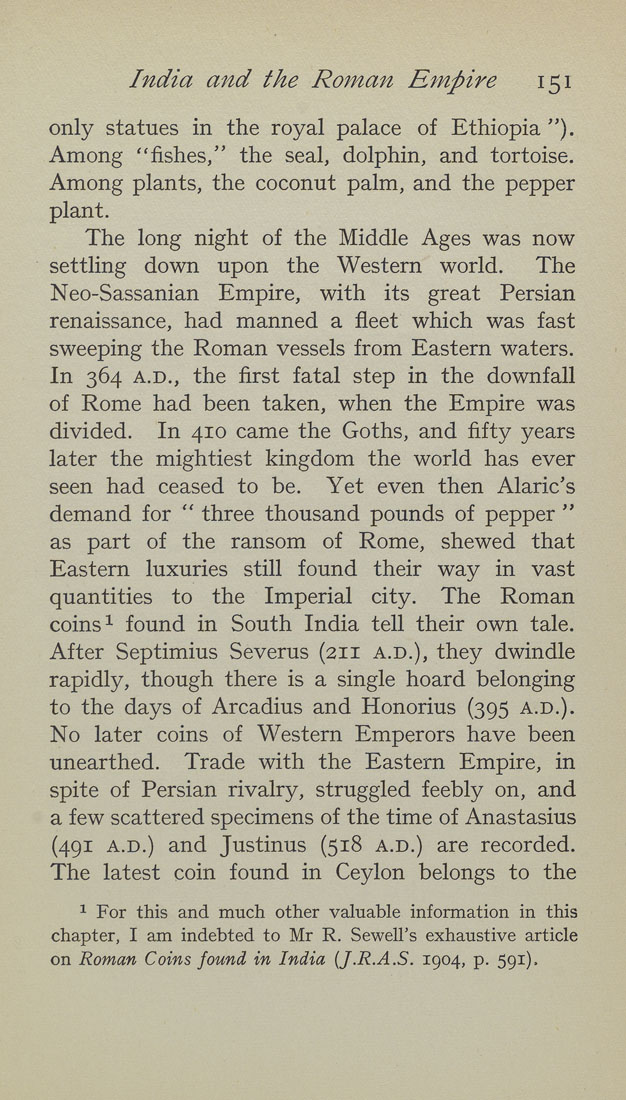India and the Roman Empire 151
only statues in the royal palace of Ethiopia ").
Among "fishes," the seal, dolphin, and tortoise.
Among plants, the coconut palm, and the pepper
plant.
The long night of the Middle Ages was now
settling down upon the Western world. The
Neo-Sassanian Empire, with its great Persian
renaissance, had manned a fleet which was fast
sweeping the Roman vessels from Eastern waters.
In 364 A.D., the first fatal step in the downfall
of Rome had been taken, when the Empire was
divided. In 410 came the Goths, and fifty years
later the mightiest kingdom the world has ever
seen had ceased to be. Yet even then Alaric's
demand for " three thousand pounds of pepper "
as part of the ransom of Rome, shewed that
Eastern luxuries still found their way in vast
quantities to the Imperial city. The Roman
coins ^ found in South India tell their own tale.
After Septimius Severus (211 a.d.), they dwindle
rapidly, though there is a single hoard belonging
to the days of Arcadius and Honorius (395 a.d.).
No later coins of Western Emperors have been
unearthed. Trade with the Eastern Empire, in
spite of Persian rivalry, struggled feebly on, and
a few scattered specimens of the time of Anastasius
(491 A.D.) and Justinus (518 a.d.) are recorded.
The latest coin found in Ceylon belongs to the
1 For this and much other valuable information in this
chapter, I am indebted to Mr R. Sewell's exhaustive article
on Roman Coins found in India {J.R.A.S. 1904, p. 591).
|








